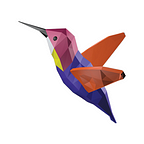How to sell and package Design Thinking better to our clients?
First things first, how do we gather knowledge and best practices?
🌎 The Hub members, consultants in people experience, organisation design and development, Design Thinking, innovation consultants, and management consultants from around the globe are committed to learning from each other and with each other about the future of facilitating workshops and improving consultation impact and scalability in a remote world, so we focus on finding what works, we are non-judgmental, curious and tentative, rather than absolute in our sharing.
Through Collaborative learning: Each participant at our online meeting introduced the topic or case that occupies their mind and thoughts and chosen the method that would fit it best:
- Deconstructing success: a new use case or step with clients or achievement in the organisation, that went really well
- Best practice & wisdom seeking: with a topic to collect best practices, methods and tools that have worked for others within this theme
- Shopping for ideas: a challenging project to gather peer ideas to figure out how to move forward best
✔️ All participants brought something and we voted with which story to work with, based on the most learning potential for ourselves. This time we voted for Wisdom Collecting about:
‘How to sell Design Thinking better to our clients?
We have followed the steps of the Reflective Solution Focused Practice and at the end it was not just our protagonist, who came up with this question, but all of us geared up with new ideas, tools, thoughts and inspiration. Elvira Kalmar, our Be-novative Partner Hub Program Facilitator of the Spark Creativity online sessions facilitated the session. Here is a collection of our best practices:
- SHARE THE GOAL — it is much easier to make people understand what they can gain with a method or tool if we start with the end-result first and reverse-engineer together with the client how to get there. What it means is, we don’t sell Design Thinking programs. We look for people interested in a program that ‘excels customer experience’, ‘validates new product ideas’, creates an ‘aligned strategy and action plan’ for a company, want to ‘transform or design a culture for creativity and collaboration’, ‘discover new business opportunities’, ‘encourage people to be proactive’, ‘co-create around the company purpose’ or to ‘solve complex problems together’. A one-slide summary of these use-cases we find useful because it gets us to the same page quickly.
- EMPATHY AND PROBLEM MAPPING — Meetings that are about us, that resonates with our problems, feelings and goals make people listen better. Many times, people don’t know their own ‘right questions’ and it is hard to frame the right problem to solve. This is why many times we offer help with a problem definition workshop technique.
- GAIN C-LEVEL SUPPORT — The problem with offering a side-project, like an innovation challenge or competition without C-level buy-in is that it will never be a high priority for the organisation, thus neither for our contact person, so we may suffer with response time, volume and outcomes. The best way is trying to find a goal that is strategically aligned with the existing company goals in that quarter or year. This will naturally involve the C-Suite managers as well, making our program a priority for everyone involved.
- INTRO ABOUT THE METHOD — Many of us love what we do so much, that we talk a lot about it, let it be a product, service or method. But usually what people remember, is what they, themselves have said or asked. So it may be best to regard this meeting only as a brief intro about the process, that is specific enough to be a conversation starter.
- QUICK TIPS — when people search for new solutions, it is usually about a quick tip on how to use a method or template, just like ‘Customer Journey Mapping template’, ‘What is an Empathy Map’, ‘How to do Storyboarding’ just to mention a few. It is much easier to find like-minded people who resonate with what we have to say than to explain it over one single meeting. We see the value in sharing regular content, posts and quick tips online with a group of interested people who may become clients in the long-run. We believe it is best to give them value first and show them what our expertise is about and what it is like working with us. Then, when the actual work starts, we can be more strategic and create a tailor-made impactful program on a larger scale.
- DESIGN EXPERIENCES — Many of us usually offer to engage with our clients in an interactive experience that is a pilot to what we are going to do later in a broader scale. Rather than going over long .ppt slides and explaining the process step by step, we find it a great way of engagement to have people experience what it is like working together with us in a mock-workshop or gamified activity.
What we gained in the experience?
For some it was the topic itself that offered new insights into their practices in relationship and partnership building with their clients, for adapting new tips and methods and for others it was the Reflective Practice as a methodology that gave a lot.
✨ The Be-novative Partner Ecosystem is a Hub of people and resources whose main goal is envisioning, accelerating and scaling the success rate of both organizational and product-development, creating impactful projects and meaningful solutions locally or globally. We share knowledge, inspire people and actively co-create new methods. We contribute to a better, more creative Earth.
We are gathering again on the 4th of March- let us know if you would like to join this Learning Community.
